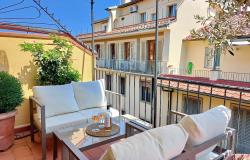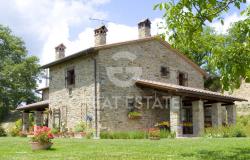Carol King reports on how Mario Bergoglio was one of many Italians who immigrated to Argentina.
Born in Buenos Aires, Argentina on 17 December 1936, Pope Francis is the first pope from Latin America. But the pope has Italian roots. He is the son of an Italian immigrant from the province of Asti in Piedmont, Mario Bergoglio, who was one of thousands of spirited Italians to make the long journey to the Americas in the early 20th century in search of a new life.

Searching on the Centro Internazionale Studi Emigrazione Italiana (CISEI, International Centre of Italian Emigration Studies) online database it is even possible to track down details regarding the journey of the pope’s father. CISEI catalogues emigration documents and recreates passengers’ embarkation lists from the port of Genoa.
CISEI reveals that Mario Bergoglio was just 21-years-old when he boarded the ‘Giulio Cesare’ (Julius Caesar) ship in Genoa to make the transatlantic crossing to Buenos Aires, arriving on 15 February 1929. At that time, the crossing took a few weeks, following a typical route from Genoa in Italy to Rio De Janeiro and Santos in Brazil, on to Montevideo in Uruguay, and finally to Buenos Aires and Rosario in Argentina.

The ‘Giulio Cesare’ was one of the great Italian liners of the era owned by the Navigazione Generale Italiana (Italian General Navigation) shipping company based in Genoa. It was built at the Hunter & Wigham Richardson shipyard in Newcastle upon Tyne, England. The ocean liner was 634 feet (193.21m) long and 76 feet (23.24m) wide, with a maximum sailing speed of 20.52 knots. The ship’s recorded boarding capacity in 1922 was 1,831 passengers in four classes: 257 passengers in first class, 306 in second class, 366 in economy and 902 in third class. The liner had a crew of 480 people.
 The ‘Giulio Cesare’ set out on its maiden voyage, from Genoa to Buenos Aires, on 22 May 1922. The liner was then used for crossings from Genoa to New York. It began being used for crossings to South America in August 1925. The ‘Giulio Cesare’ was one of the most modern luxury liners of the time, with opulent cabins, dining rooms, a bar and a library. Even third-class passengers dined well: a lunch menu of the time offered minestra lombarda vegetable and bean soup served with bread and wine, followed by baccala in bianco dried salted cod fish with salad, potatoes and onions. The meal rounded off with fruit.
The ‘Giulio Cesare’ set out on its maiden voyage, from Genoa to Buenos Aires, on 22 May 1922. The liner was then used for crossings from Genoa to New York. It began being used for crossings to South America in August 1925. The ‘Giulio Cesare’ was one of the most modern luxury liners of the time, with opulent cabins, dining rooms, a bar and a library. Even third-class passengers dined well: a lunch menu of the time offered minestra lombarda vegetable and bean soup served with bread and wine, followed by baccala in bianco dried salted cod fish with salad, potatoes and onions. The meal rounded off with fruit.
Yet, not everyone had a smooth crossing in those days. Only two years before Mario Bergoglio, the ‘SS Principessa Mafalda’ Italian transatlantic ocean liner named after King Victor Emmanuel III’s daughter, Princess Mafalda of Savoy, had sunk. On 25 October 1927, while the ‘SS Principessa Mafalda’ was off the coast of Brazil, a propeller shaft fractured and damaged the hull. Although the ship sank slowly and rescue vessels were on hand, the confusion and panic among passengers and crew resulted in the deaths of 314 of the 1,252 people on board, representing the greatest ever tragedy in Italian shipping.

The pope’s father was one of many Italians to emigrate in 1929. According to the Italian National Institute for Statistics (ISTAT), 174,802 Italian citizens emigrated. Of those, 73,766 headed for the Americas and 24,521 to Argentina. At that time, there was a wave of emigration. Some emigrants hoped to make their fortune in the New World, some left to escape from poverty, and others left for political reasons.
According to the pope’s sister, Maria Elena Bergoglio, their father left Italy because of the rise of fascism under Benito Mussolini, who came to power in 1922. She told ‘La Stampa’: “...the situation was difficult, but we never lacked the things that our family needed. I remember that my father repeated often that the advent of fascism was the reason that really pushed him to leave.”
In 1929, Argentina had the world’s fourth highest capita GDP and appeared an attractive destination. It was an underpopulated country with an open immigration policy, which was rich in natural resources. Employment prospects ranged from agriculture to factory work. Between 1870 and 1930, Argentina received an estimated seven million immigrants, mostly from Spain and Italy.

However, not all those Italians who emigrated stayed abroad. ISTAT reveals that in 1929, 115,918 were repatriated and of those, 42,088 came from the Americas and 17,056 from Argentina. Some were homesick, some had moved abroad to save enough money to return home and buy some land, and some encountered intolerable prejudice. In Argentina, the activities of Italian-born anarchist Severino Di Giovanni during the 1920s led to an atmosphere of suspicion against Italians.
Nevertheless, those Italians who stayed in Argentina helped build the country. And there were many of them: it is estimated that up to 24 million Argentines have some degree of Italian descent and that they form up to 60% of the total population.
In an effort to depict the struggles and triumphs of those emigrants, the Galata Museo del Mare (Galata Museum of the Sea) in Genoa has devoted a section to Memorie e Migrazioni (Memories and Migration). There, visitors can learn about the life of Italian immigrants in the colourful quarter of La Boca in Buenos Aires, what life was like for Italian immigrant farmers in Brazil and what it was like for Italian immigrants disembarking at Ellis Island, the gateway to the United States. The museum is also mounting an exhibition in collaboration with CISEI that contains information on Mario Bergoglio’s voyage. The exhibit includes a model of the ‘Giulio Cesare’ liner.













